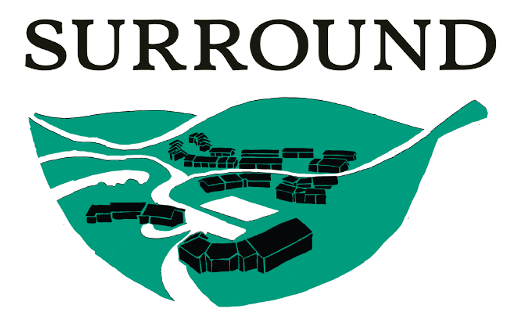Lesson plan:
Multifunctional spaces
Learn about Multifunctional spaces and ecosystem services through a brief introductory video lecture, followed by a group work where the students analyse photos to study Changes to Green Space and ECosystem services. In the end, there is a MIXED GROUP REFLECTION.
Relevant courses:
PreRequisite knowledge:
TIME CONSUMPTION:
Spatial planning,
landscape architecture,
natural resource management
Basic knowledge of nature goods in green space and/or spatial planning
Around 45 minutes x 2
— L E A R N I N G O U T C o M E —
Understand the concepts of multifunctional spaces and ecosystem services
Analyse changes in green spaces and ecosystem services over time
Develop and explain reasoning
Reflect on implications of analysing historical changes for future planning
— T E A C H I N G M A T E R I A L —
Part 1: Basic understanding of multifunctional spaces
ESTIMated TIME USAGE: 10 MIN VIDEO + 15 MIN ANSWERING QUESTIONS
1. Watch the introductory video on multifunctional spaces here
2. Answer the following questions in groups:
a) What functions may different urban spaces have?
b) What functions are most emphasised in Norwegian spatial planning?
Part 2: Group work and discussion
ESTIMated Time usage: 30-45 min
While you do part 2, take notes and prepare to share the main findings and discussions with students from other groups.
Start with one or more of the following image pairs:
Sogndal frå vest
Sogndal frå sør
Sogndal sentrum frå nord-aust
1. What changes in green spaces do you find in the image pair?
Use the list below as inspiration. Can you find other types of changes?
Overgrowth of agricultural fields and pastures
Construction on green spaces
From woodland to agricultural fields/pastures
From orchard to agricultural fields/pastures
2. Compare the changes with the map (specify map)
3. Use the overview over different urban ecosystem services below to discuss what ecosystem services the different green spaces provide.
4. How has the change in green spaces impacted on ecosystem services from green spaces in Sogndal?
5. What ecosystem services have synergies? Are any of the ecosystem services conflicting?
Optional
6. What are the most important priorities in green spaces development in Sogndal in the years ahead? Why? How can this be done?
Part 3: Mixed group reflection
ESTIMated TIme usage: 30 mIN
Present the main findings and discussions from your group work in part 2.
Do the findings and discussions presented from the different groups correspond? What differences are there?
Can you explain the differences? What is the reasoning behind the different arguments?
How can analyses of historical changes help planning practice?
— T U T O R G U I D A N C E —
The lesson plan has three parts. Part 2 and 3 build on part 1. If there is not enough time to carry out all the parts, you can skip part 3, or substiute it with a shorter plenary reflection or tutor-led summary.
Who is the lesson plan suitable for?
Students trained in analysing green spaces and/or planning. Dependent on facilitation, the lesson plan may be suitable for bachelor students in planning/landscape architecture/natural resource management towards the end of their degree, or alternatively for master students without bachelor’s degrees in planning/landscape architecture/nature management, but where such courses are included at master’s level.
Suggestion for arrangement and time management:
In part 2, you can distribute the picture pairs to make sure all pictures are covered. If you have more than three student groups, two and two groups may analyse the same picture pair, to compare and contrast their results and reflections in part 3.
If you want to work with another study area, try to find aerial photos of the same area on two different points in time. You can approach local history organizations or access Norge i bilder.
The groups will probably need around 45 minutes to be introduced to, and work through, the questions in part 2.
In part 3, groups can be mixed and reorganised with one person from each group from part 2 represented in the new groups. Alternatively, the groups that have worked with the same picture pairs in part 2 can sit together and discuss and compare results and reflections.
Tip for part 2, question 5:
Alternatively, one can add or replace with more thematic questions, which are linked more specifically to the learning objectives for the specific course syllabus. E.g. for a course on climate adaptation: What ecosystem services are important for climate adaptation? Can we find common features that characterize green spaces that are important for climate adaptation?
L i t e r a t u r E f r O M s u r r o u n d (IN NORWEGIAN):
Groven, K., Hamre, L. N., Moberg, K. R., & Selseng, T. (2021). Fortetting og byspreiing: Praksis og haldningar gjennom tretti år i fire norske kommunar. I L. Longvanes, E. Bjørhusdal, J. Fossøy, D. Sekkingstad, & T. Årethun (red.), Stadutvikling. Fjordantologien 2021 (pp. 81–100). Oslo: Universitetsforlaget. https://doi.org/10.18261/9788215053349-2021-05
Vik, M., Hamre, L.N., Groven, K., Gamme, E.H., Stokstad, H. & Hauge, L. (2021) Globale miljømål og gode nærmiljø – kan dei verke saman? Ein diskusjon av berekraftig tettstadutvikling i Sogndal. I L. Longvanes, E. Bjørhusdal, J. Fossøy, D. Sekkingstad & T. Årethun (red.) Stadutvikling. Fjordantologien 2021 (pp. 25-45). Oslo: Universitetsforlaget. https://doi.org/10.18261/9788215053349-2021-02
I N T E R N A T I O N A L l i t e r a t u r E :
Hansen, R., Olafsson, A.S., van der Jagt, A.P.N., Rall, E. & Pauleit, S. (2019). Planning multifunctional green infrastructure for compact cities: What is the state of practice? Ecological Indicators, 96, 99–110. https://doi.org/10.1016/j.ecolind.2017.09.042

